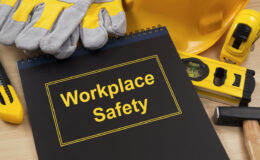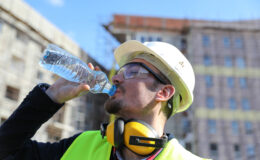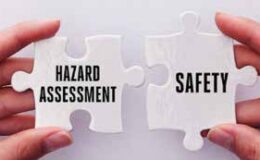By Travis Halsted, Loss Control Consultant
As a member of the Loss Control Department, I conduct safety tours within different types of facilities that conduct a wide variety of different daily operations. No matter the type of facility, there is one piece of equipment that is always present. This one piece of equipment, while only having a few moving parts, is responsible for a great deal of injuries and fatalities yearly. The piece of equipment I am speaking of is a simple ladder. Ladders, whether step form or extension (single), can be a valuable tool but also an unforgiving one if misused.
 Since 2006 MTMIC has incurred costs exceeding 4.1 million dollars from falls from ladders and scaffolding. These injuries are broken down in 30 strain/sprains, 4 lacerations, 8 fractures, 1 dislocation, and 16 contusions. In addition to these injuries, there are other dangers when a fall from a ladder occurs. In the event of an employee working around electrical items, there is a greater chance that they could also be exposed to high voltage injuries. If there are shafts, or other protruding items, the falling employee may be exposed to impalement hazards. As working with ladders is often a necessity in the workplace I found it paramount that I discussed some aspects of ladder safety with you.
Since 2006 MTMIC has incurred costs exceeding 4.1 million dollars from falls from ladders and scaffolding. These injuries are broken down in 30 strain/sprains, 4 lacerations, 8 fractures, 1 dislocation, and 16 contusions. In addition to these injuries, there are other dangers when a fall from a ladder occurs. In the event of an employee working around electrical items, there is a greater chance that they could also be exposed to high voltage injuries. If there are shafts, or other protruding items, the falling employee may be exposed to impalement hazards. As working with ladders is often a necessity in the workplace I found it paramount that I discussed some aspects of ladder safety with you.
There are several keys to safely working with a ladder. While each of these play a vital role in safe ladder usage practice, it is essential that each and every one of these aspects are considered.
• Ladder Selection: Select a ladder that is the right length to safely reach the working height that is intended. Having a ladder that is to short can cause the employee to Climbover reach. Furthermore, ensure that the ladder is proper for the duty that you are completing and it is of the proper weight rating for the person using it. The weight rating should never be exceeded so it is vital to include the weight of the person climbing it and any tools and/or items that they are carrying into the total weight that the ladder will hold.
• Ladder Setup: Ensure that before each use it is inspected for splits or cracks in any part of the ladder. Furthermore, check for any missing or broken rungs. When setting up the ladder ensure that it is on form footing and that it is fully open with the spreaders locked. Do not use a step ladder as though it is a single ladder. If you are using an extension ladder, ensure that its feet are one-quarter the length of the ladder away from the upright surface to be climbed.
• While on the Ladder: When using a ladder an employee should never over-reach. Instead of over reaching the employee should step down off of the ladder and move it closer to the desired point. Not following this simple rule causes more accidents than any other while using a ladder.
• Ladder Care: When finished with a ladder, it should be returned to its designated storage spot and secured, to keep it from falling. When placing it back in its storage spot, check it over for any damage such as cracks, breaks and/or bent rungs. The ladder should be stored out of direct exposure to the sun and kept in a dry space.
Along with some of these safety bullets, it is vital that you train your employees on not only the safe way to work with ladders, but the hazards that could present themselves while on the ladders. Train them on proper storage, and to have someone help them carry and setup the ladder if it is too heavy or long for them to handle individually. If another employee is available to work with the person on the ladder then have the second person support the base of the ladder to give the person on the ladder some added security.
If you need additional thoughts or ideas on ladder safety, please do not hesitate to contact your Loss Control Consultant.





